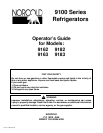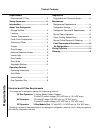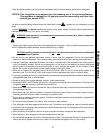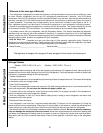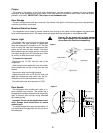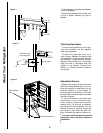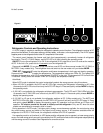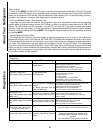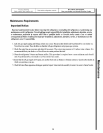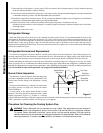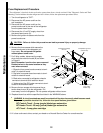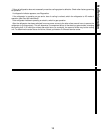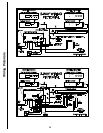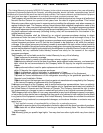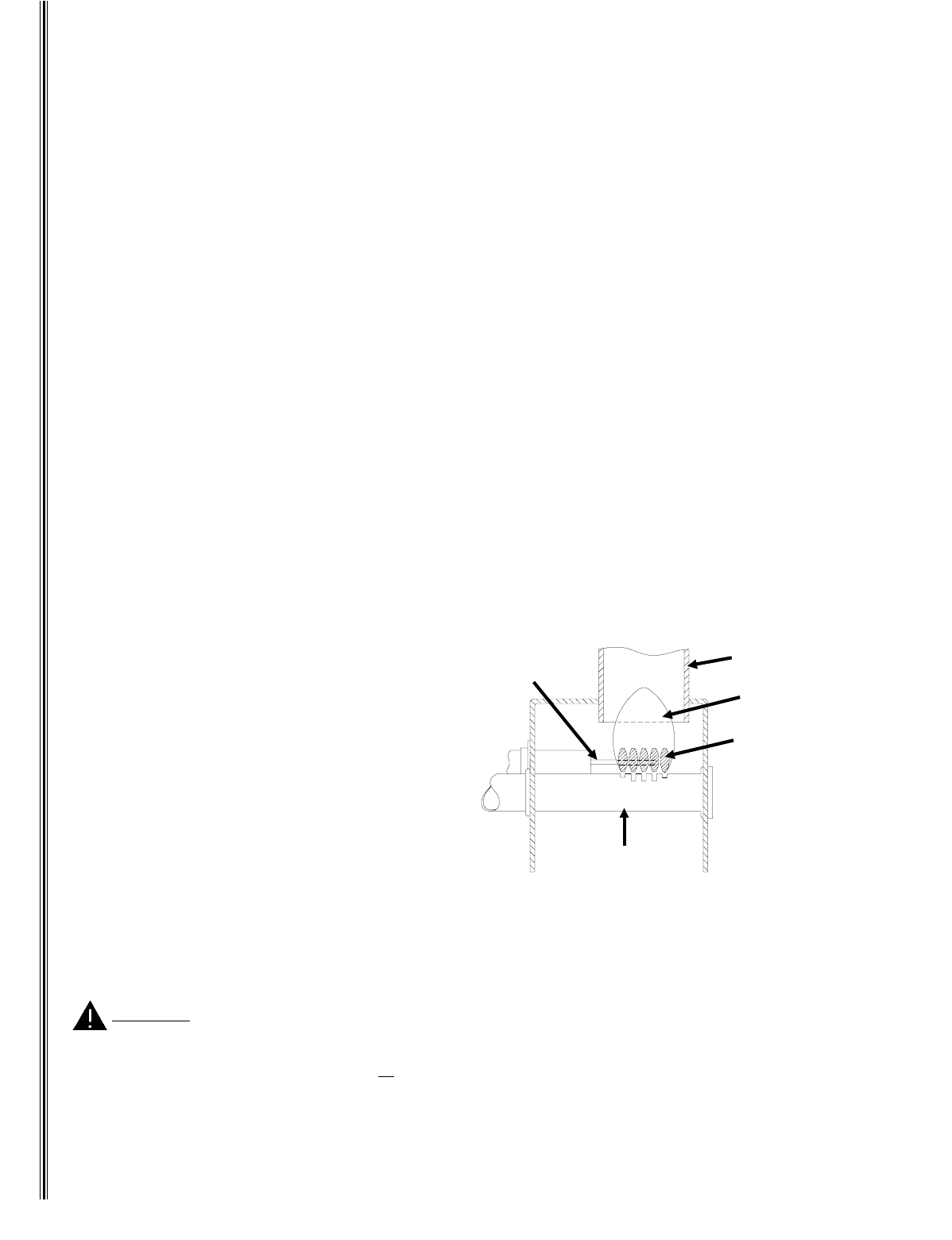
7. Inspect the flue of refrigerator’s cooling system. This area must be free of foreign materials. Foreign materials observed
in the flue indicate the burner requires cleaning.
8. Insure the area directly behind the refrigerator is not being used for storage. Keep the refrigerator area clear and free from
combustible materials, gasoline, and other flammable vapors and liquids.
9. Periodically inspect the ventilation system. The air passage from the bottom intake vent to refrigerator coils and from the
refrigerator coils through the upper exhaust vent must be unobstructed.
10. Inspect combustion seals (visual check without removing the refrigerator). Combustion seals are
attached to the back surfaces of the refrigerator’s mounting flanges and must be continuous between the wall and the
mounting flanges.
11. Periodically inspect door seals.
Refrigerator Storage
When the refrigerator will not be in use for an extended (seasonal) period of time, it is recommended that all power to the
refrigerator be disconnected. Unplug the refrigerator’s AC power cord from the wall receptacle and disconnect the 12 volt
DC supply wires from the refrigerator’s power board located at the rear of the refrigerator. Clean the refrigerator interior and
latch the doors in the storage position. After the extended shut-down period, the burner, burner orifice, and flue must be
inspected before igniting the burner flame. These areas must be free from dust, spider webs, or other obstructions which might
restrict the combustion system.
Refrigerator Removal and Replacement
To remove the refrigerator, disconnect both AC and DC power sources from the refrigerator. Turn off the propane gas at
the main supply tank. Turn the refrigerator’s manual shut-off valve. Disconnect the gas supply piping at the manual shut-off
valve. Remove the mounting screws securing the refrigerator to the enclosure. Remove refrigerator from the enclosure.
Before reinstalling the refrigerator, inspect the areas behind the mounting flanges for damaged or missing seal strips.
These seal strips serve as a combustion seal which isolates the living space of the vehicle from refrigerator’s combustion system.
Reinstall the refrigerator by reversing the above procedures. After reinstalling the refrigerator, check the gas fitting connections for
leaks.
Do not check for leaks with an open flame. Use an
approved leak-detection solution
.
Burner Flame Inspection
The efficiency of your refrigerator while operating in the
gas mode is dependent upon the correct burner flame. The
burner flame provides energy to the refrigerator’s cooling
system.
The burner flame efficiency is a function of correct input
gas supply pressure, air input, and burner and burner
orifice cleanliness.
A visual check of the burner flame should be made
regularly. The flame should be sharp blue with a stable
burning appearance (Figure 11). If there is a constant
yellow component observed or if the flame appears erratic or unstable, switch the refrigerator to electric or turn the refrigerator
"OFF" and contact a qualified installer, service agency, or gas supplier.
Procedure for Cleaning the Cooling System Flue
Maintenance
Figure 11
Ignition/Sense
Electrode
Flue Tube
Pale Blue
Outer Cone
Sharp Blue
Inner Cone
Burner
WARNING
Carbon Monoxide can be hazardous to your health. Gas appliances may emit excessive
Carbon Monoxide if the refrigerator’s burner, burner orifice, and the flue tube are not regularly cleaned.
To prevent Carbon Monoxide, the burner, burner orifice, and the cooling system’s flue tube must be
cleaned at least once a year and after
all prolonged (seasonal) shut-down periods. Refer to the following
cleaning procedures, or contact a qualified installer, your dealer or a Norcold service center.
10



